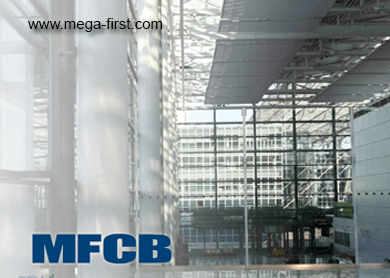
KUALA LUMPUR: It is no secret that the 21-year power purchase agreement for Mega First Corp Bhd’s 51%-owned Serudong Power Sdn Bhd in Tawau, Sabah, with Sabah Electricity Sdn Bhd is up for renewal in November 2017, so investors may be interested to know that the group is now engaging the authorities ahead of the renewal deadline.
“We are in discussion with the authorities for renewal. We are waiting for a reply from them, but I will have to get back to you once we get full clarity of this matter,” Mega First executive chairman Goh Nan Kioh, 62, told The Edge Financial Daily in a recent interview.
Eyes are on the concession renewal as its power generation business — which is contributed by both the Sabah plant and its 60%-owned Shaoxing Mega Heat & Power Co Ltd in China — makes up the bulk of the group’s revenue. For the financial year ended Dec 31, 2014 (FY14), the power generation business contributed a hefty 79%.
While its Sabah plant’s renewal deadline is just two short years away, the deadline for its China plant isn’t that far off either: 2022.
Goh kept mum about the chances of the group securing renewals for both plants. However, given the current peak utilisation rates at the plants, there may be reason for some optimism.
Meanwhile, he shared that Mega First will begin the construction of its third power plant — the 260mw Don Sahong hydropower plant in the Champassak Province of Laos — sometime this year.
“Construction of the hydropower plant in Laos will take about 3½ to 4 years, which is expected to begin sometime this year and hopefully to be completed in 2019,” said Goh.
“The hydrowater project is expected to generate some US$120 million (RM454.8 million) in annual revenue beginning 2020. Once the commercial operation begins, we will be given a 25-year concession to operate the plant,” said Goh, who owns a 32.63% stake in Mega First.
The project’s cost has been scaled down to US$500 million from US$700 million projected previously, due to softening economic conditions, he added.
Mega First on Feb 13, 2008 signed a project development agreement with the government of Laos to build, own and operate the Don Sahong hydropower plant on a 125ha piece of land. Located at the Hou Sahong channel of the Mekong River, the plant will utilise 15% of the total Mekong River flow.
The run-of-river hydropower can generate some 2,000 GWh of electricity per year, which will be sold to Electricite Du Laos, a Laos state-owned corporation that owns and operates the generation, transmission and distribution of power assets in Laos.
The hydropower project — undertaken by Don Sahong Power Company Ltd — is an 80:20 joint venture between Mega First and the Laos government.
To date, Mega First has spent some RM57.25 million to conduct a feasibility study on the project, as well as construct basic infrastructure such as access roads and a bridge to the site.
Given its cash balance of only RM240.46 million or RM1.08 per share as at March 31, 2015, Goh said Mega First is considering borrowing or a rights issue to fund the project.
As for its lime products business, Goh expects Mega First to increase its quicklime capacity by 400 tonnes per day (tpd) from next year, with most of its products to be exported to India, Indonesia and the Philippines.
Currently, the group operates five lime kilns in Perak, with a combined capacity of 760tpd of quicklime and 290tpd of hydrated lime. Last year, Mega First sold some 300,000 tonnes of lime products.
“We now have 404.69ha of land in Perak ... we plan to steadily increase the capacity to 1,160tpd in the next couple of years, which will also see earnings [from the division] double from current levels,” Goh said, adding that the limestone business will remain a key growth driver of Mega First for this year.
Its lime products business is the second-largest revenue contributor, which generated 16% or RM107.86 million of the group’s total revenue for FY14.
Meanwhile, Goh said Mega First will expand its plantation business in Cambodia to include coconut, as it wants to venture into food-related businesses.
“We are exploring investing in coconut oil plantations because we want to branch into the food industry. If you sell coconut oil, you know the world price. But for virgin oil, that segment is different. In terms of return, coconut plantation is better than rubber,” he explained, adding that at present, the group’s coconut trees are only at the nursery stage.
In July 2013, Mega First obtained a 90-year concession to develop and cultivate rubber on some 9,477ha of land in Mondulkiri Province, Cambodia.
The group will pay concession fees for the cleared or cropped area from the sixth year of the concession period at a rate of US$5 per hectare annually, which will increase 1% annually.
It was previously reported that Mega First’s entry cost in Cambodia was about US$330 per ha, while planting will cost the group some US$54 million over 13 years from 2013.
For FY14, Mega First saw its net profit slip 5.6% to RM69.9 million from RM74.05 million, even as revenue rose 6.9% to RM672.46 million from RM628.76 million a year ago, mainly on impairment charges on associates and a RM2.5 million loss from quoted investments.
The stock closed up one sen at RM2.27 last Friday, with a market capitalisation of RM505.9 million.

This article first appeared in The Edge Financial Daily, on July 13, 2015.